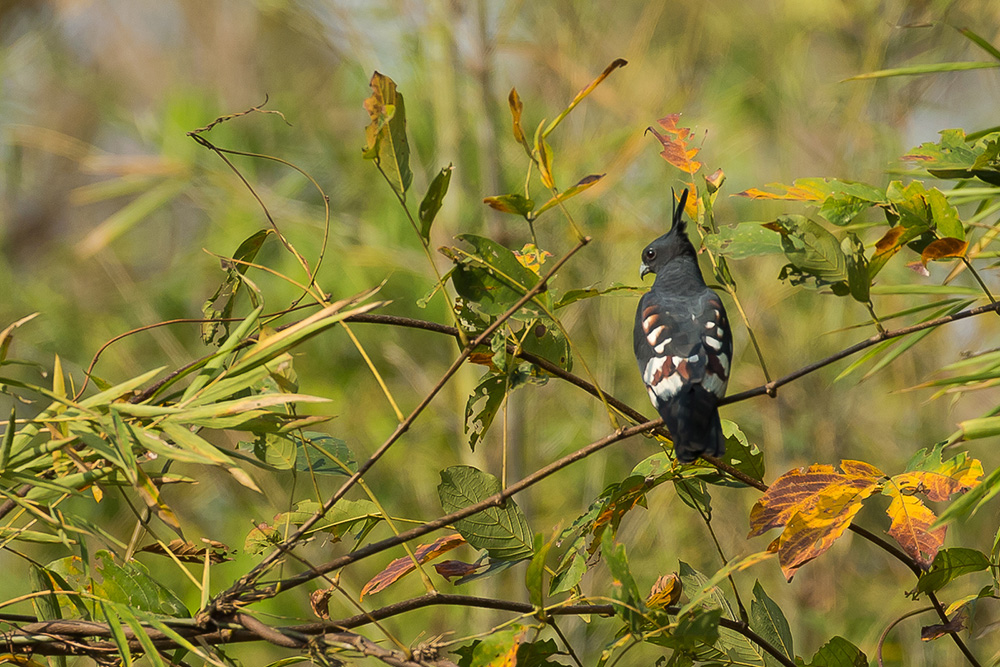
Tiger reserves are not just about spotting and photographing tigers, but also a standing testimony to the preservation of larger landscapes and the biodiversity they support. As the saying goes, the jungle is full of surprises and animals or birds can make their appearance when you least expect them. Such was one of our early morning drives on 9th April, 2015 in the Kolsa range of Tadoba Andhari Tiger Reserve. We were driving through dense bamboo at Shivanzari when I suddenly noticed a bird that looked very different. It was definitely a lifer for me and I was able to quickly make a few images of the raptor with my 500mm lens.
Upon returning to the forest rest house at Kolsa, I consulted a few forest officials and naturalists and they confirmed that it was a Black Baza and it was possibly the first record of the species from Western Maharashtra.
The Black Baza (Aviceda leuphotes) is a medium-sized and handsome bird of prey found in the forests of South and Southeast Asia. It is rare and local in much of its range in the Indian subcontinent (Ali and Ripley 1987, Grimmett et al. 1998, Kazmierczak 2000). The races in the Indian region are migratory, wintering in the south of the Peninsula and Sri Lanka. A prominent crest is a feature of the bazas. They are found in dense evergreen forests often in flocks. They spend a lot of time perching on bare branches of tall trees rising above the forest canopy. These raptors feed primarily on insects such as grasshoppers but also supplement their diet with prey like lizards, tree frogs, and occasionally small mammals, bats and birds.

 CI is a non-profit, non-commercial portal that aims to facilitate wildlife and nature conservation by providing reliable information and the tools needed to campaign effectively.
CI is a non-profit, non-commercial portal that aims to facilitate wildlife and nature conservation by providing reliable information and the tools needed to campaign effectively.
Chosen as 'Picture of the Week'
The Black Baza is a medium-sized and handsome bird of prey found in the forests of South and Southeast Asia. It is rare and local in much of its range in the Indian subcontinent.